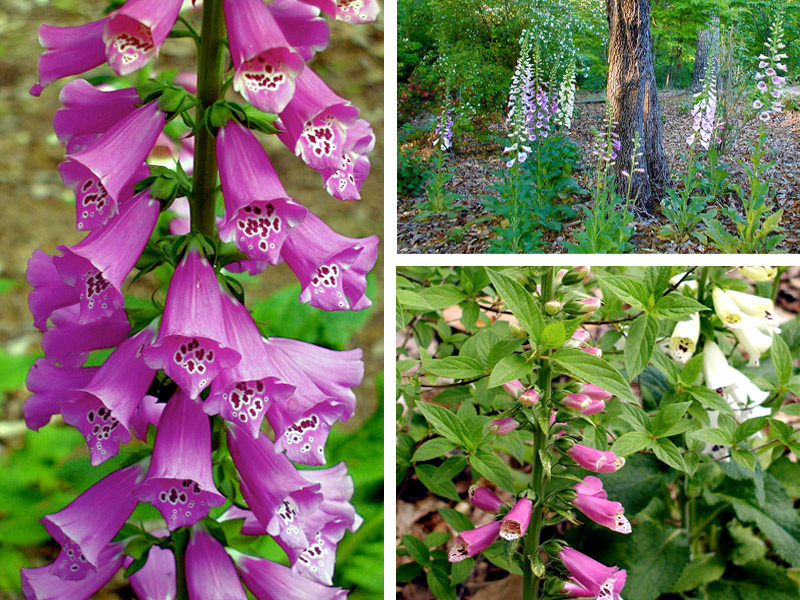Beautiful April Garden
 Sunday, April 24, 2016 at 9:40PM
Sunday, April 24, 2016 at 9:40PM April may be the prettiest month in my garden.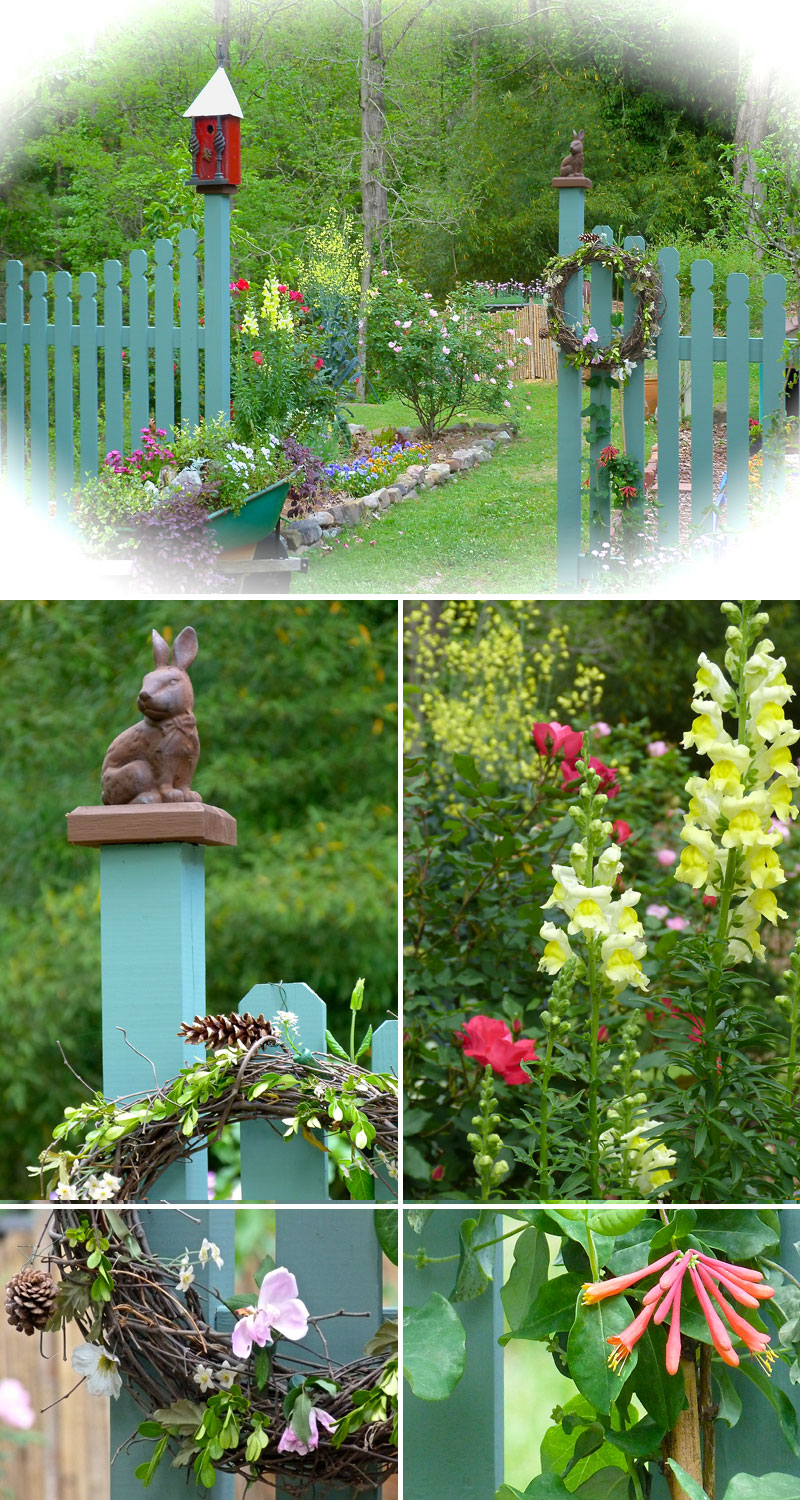 I recently had a garden party for the ladies in my church; over 90 people came! (Yes, we managed parking for everybody, and the garden came through completely undisturbed.) The weather was perfect, and we all had a great time. Everyone loves a beautiful garden. Would you like a brief tour? I will cover the woodland garden in my next post. Here are a few views around the patio and front garden:
I recently had a garden party for the ladies in my church; over 90 people came! (Yes, we managed parking for everybody, and the garden came through completely undisturbed.) The weather was perfect, and we all had a great time. Everyone loves a beautiful garden. Would you like a brief tour? I will cover the woodland garden in my next post. Here are a few views around the patio and front garden:
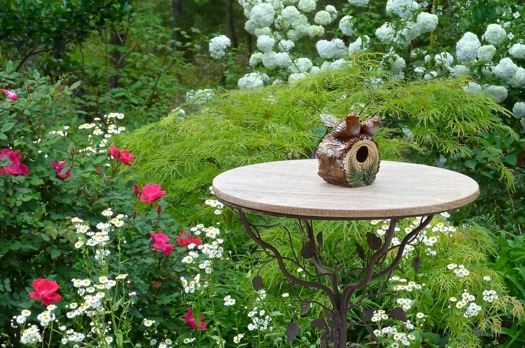
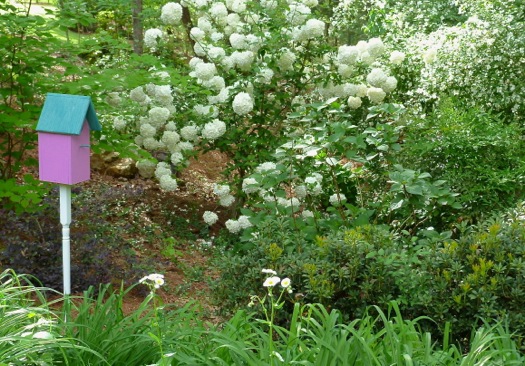
 Yes, that white flower in the front is Erigeron, also called Fleabane, a wildflower that is known as a common weed, though a very pretty one!
Yes, that white flower in the front is Erigeron, also called Fleabane, a wildflower that is known as a common weed, though a very pretty one!
The following two images are of my first peony bloom, 'Shirley Temple.' I shot the top picture soon after the peony bud opened, after a heavy rain. The second photo is a few days later. Peonies are new to my garden this year, but not new to my heart, for I have loved them since childhood.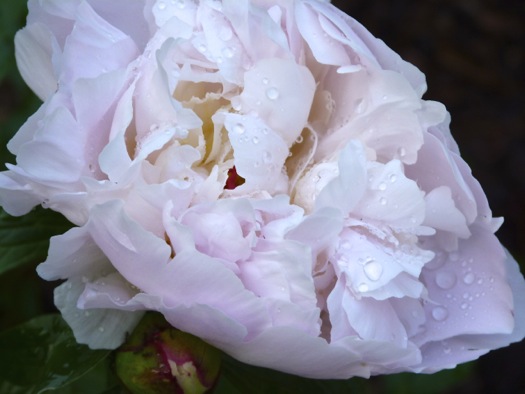



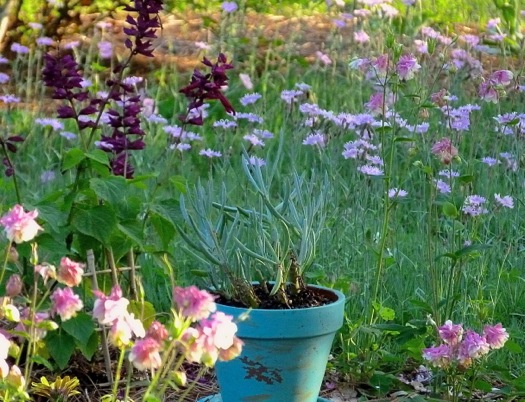 Columbine, purple salvia, Dianthus 'Bath's Pink' and a succulent called 'Blue Chalk Fingers.'
Columbine, purple salvia, Dianthus 'Bath's Pink' and a succulent called 'Blue Chalk Fingers.'
 Penelope Rose is one of my favorites.
Penelope Rose is one of my favorites.
 Romantica rose 'Orchid Romance.' I bought it because of its name!
Romantica rose 'Orchid Romance.' I bought it because of its name!
 This Voodoo Lily bloom did not open till the day after the garden party. Thankfully! The bloom smells exactly like a rotting corpse, and I was afraid it would spoil the party.
This Voodoo Lily bloom did not open till the day after the garden party. Thankfully! The bloom smells exactly like a rotting corpse, and I was afraid it would spoil the party.
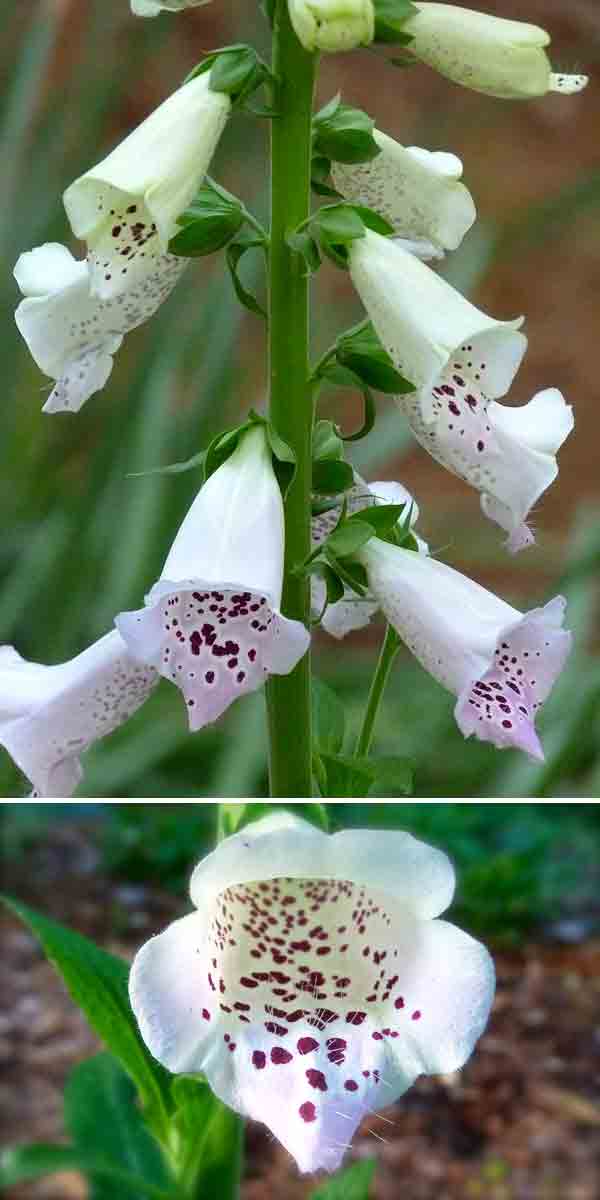 Foxglove 'Camelot'
Foxglove 'Camelot'
 Top row: Two views of Calibrachoa. Middle row: Blue Eyed African Daisy; Violas. Bottom row: Hybrid Columbine; Pink Dianthus.
Top row: Two views of Calibrachoa. Middle row: Blue Eyed African Daisy; Violas. Bottom row: Hybrid Columbine; Pink Dianthus.

I hope you enjoyed the tour. May you have a beautiful week! Deb
